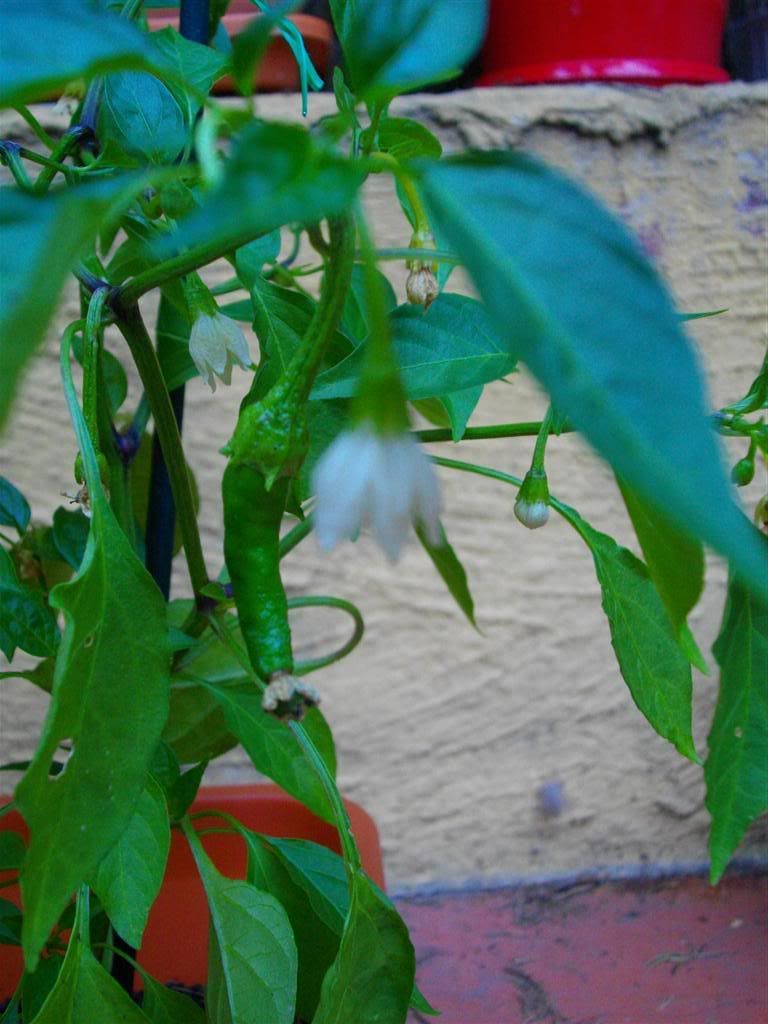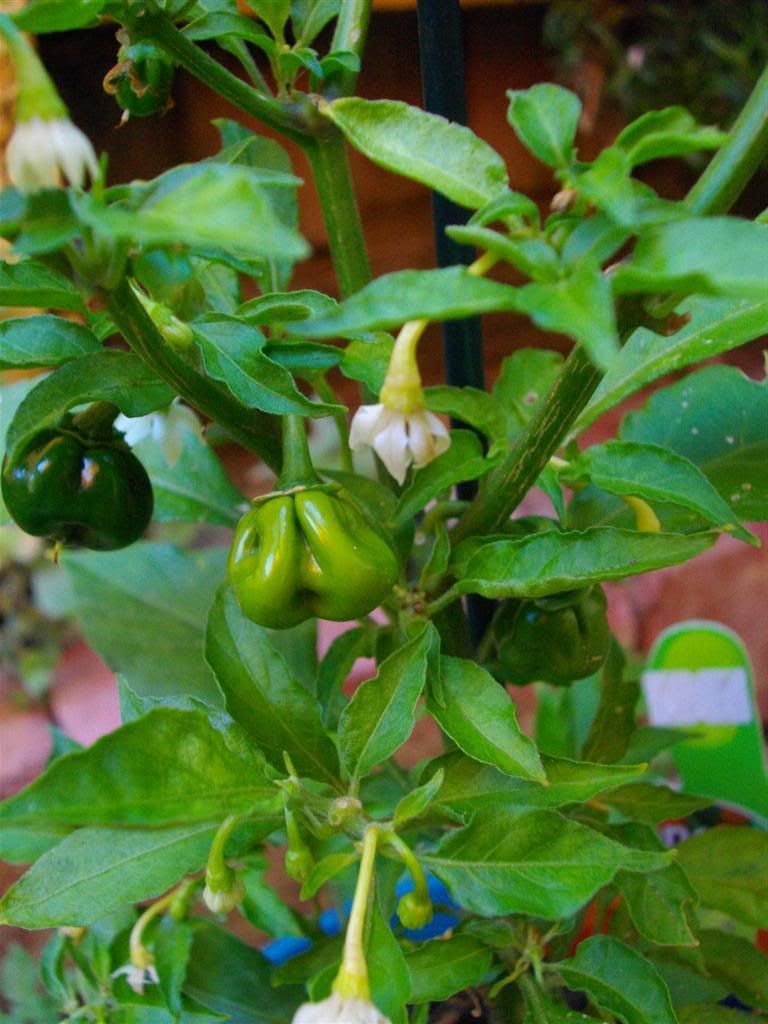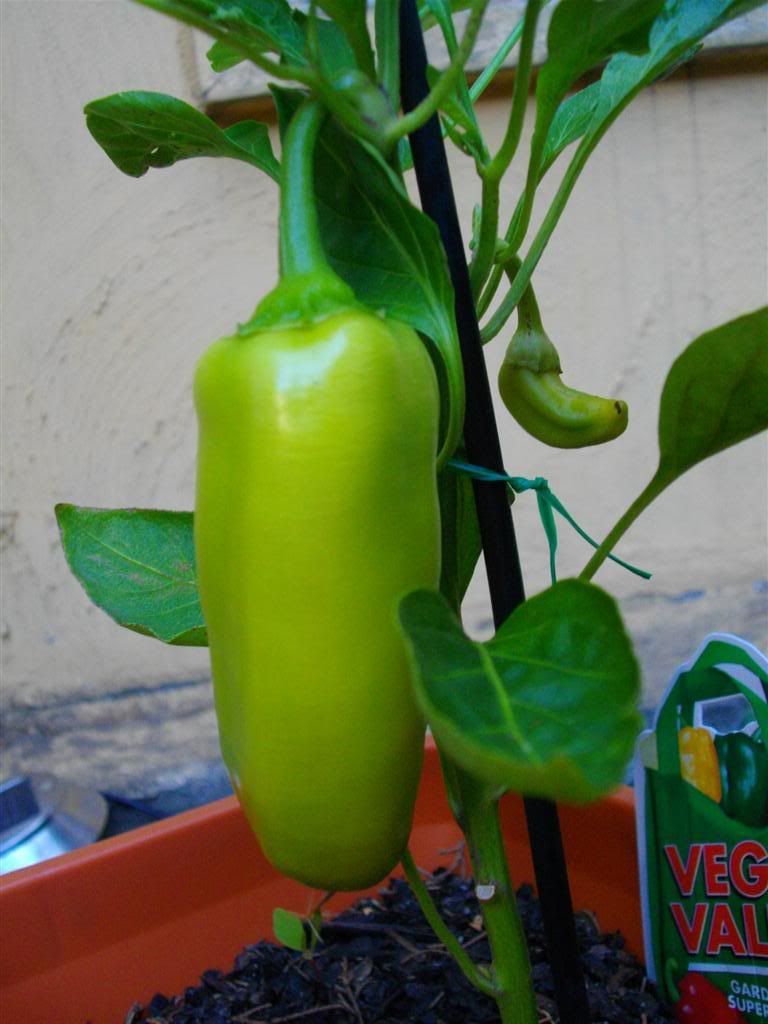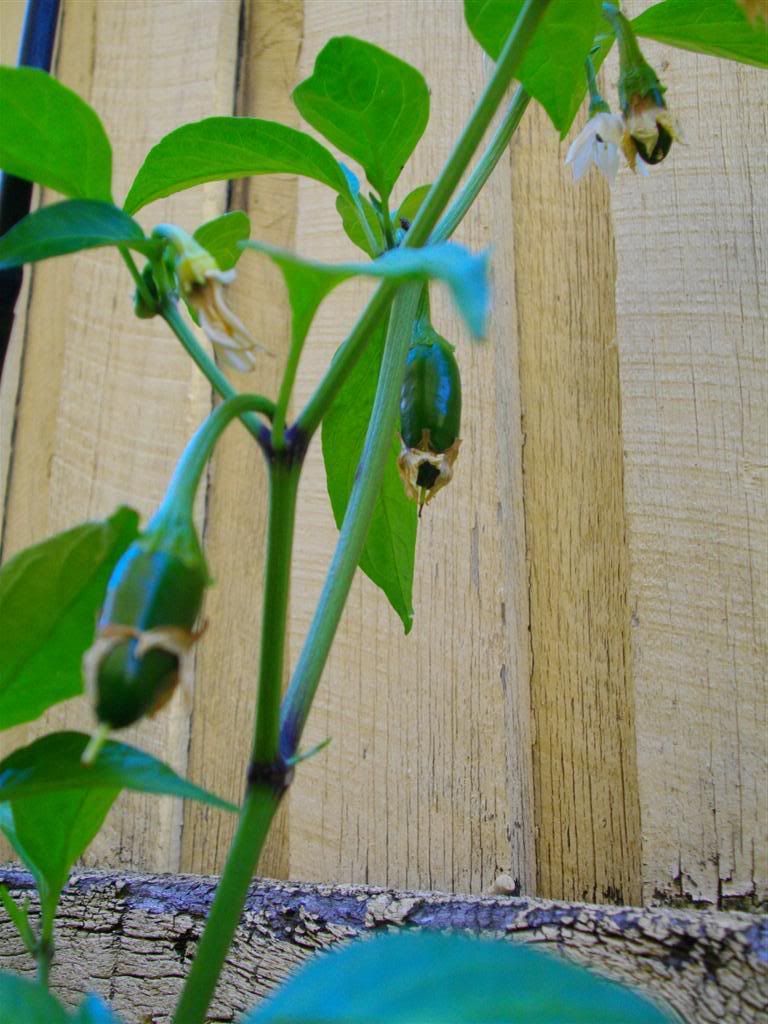Chilis
Cayenne
Named after the city of Cayenne in French Guiana, this chili will eventually become red and hot and probably tossed into a stir fry (if not crushed into a dipping sauce...). Seen here as still green, we'll give it a bit more time. The same goes for all the other flowers!

Habanero
One of the hottest chilis, this perennial plant (meaning it can produce flowers, and hence fruits, all year round if good care is practiced!) Thrives in hot weather, and only should be watered when the soil is dry, otherwise the fruit produced is bitter.

Sweet Pepper
Watch this one grow! Check out the previous post. Unfortunately the other chili appears to be quite not much of a grower...seems like all resources are going towards fattening the other one!

Jalapeno
This pepper probably needs no introduction, although some may not know that the chipotle pepper is actually a smoked jalapeno. The red fruits are considered a bit inferior compared to the long green ones. It is also known as huachinangos or chiles gordos in some parts of Mexico, where it has originated.

This pepper probably needs no introduction, although some may not know that the chipotle pepper is actually a smoked jalapeno. The red fruits are considered a bit inferior compared to the long green ones. It is also known as huachinangos or chiles gordos in some parts of Mexico, where it has originated.

What contributes to the spiciness of these fruits? Factors include growing temperature, hours of sunlight, moisture, soil chemistry, and the type and amount of fertilizer used. Dried peppers usually end up spicier than their fresh counterparts, and it also depends on the conditions to which they were dried that contribute to their spiciness. Ultimately, it is because of the naturally occuring compound called capsaicin that makes chili spicy (or 'piquant'), and there is a form of measurement known as Scoville scale which measures the hotness of peppers. Wilbur Scoville devised the Scoville Organoleptic Test which determines how much capsaicin there is in the pepper. The sweet bell pepper (capsicums) have a rating of zero. Check out the heat scale here.
0 comments:
Post a Comment